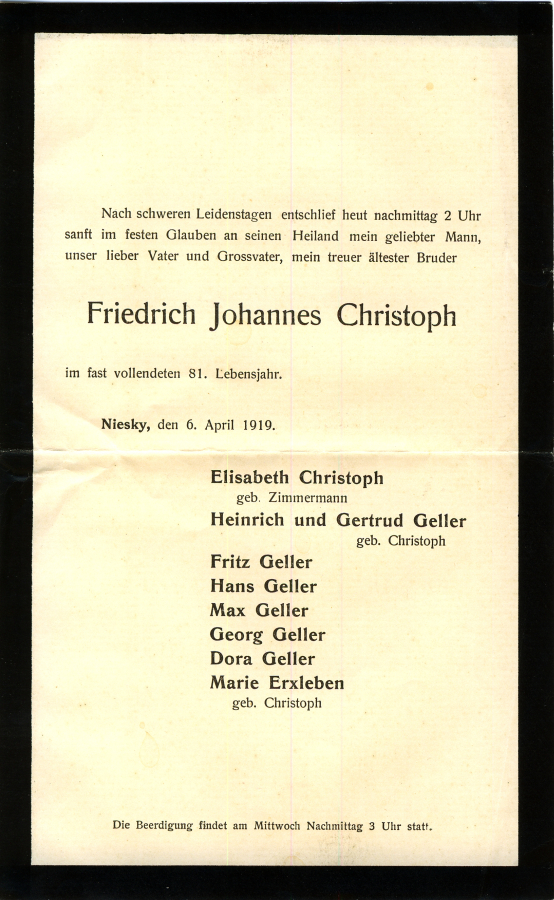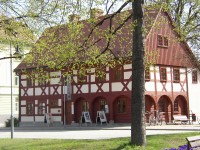Die schwarzumrandete Traueranzeige für Friedrich Johannes Christoph (1838-1919) wurde als vierseitiges Faltblatt gedruckt, die Seiten 2-4 sind unbeschrieben. Als Hinterbliebene unterschrieb seine Ehefrau Elisabeth Christoph, geb. Zimmermann sowie seine einzige Tochter Gertrud Elisabeth Geller (1868-1959) mit Schwiegersohn Heinrich Geller. Außerdem sind weitere Angehörige der Familie Geller sowie seine Schwester Marie Luise Erxleben, geb. Christoph (1841-1928) genannt.
Friedrich Johannes Christoph (1838-1919) war der älteste Sohn von Johann Ehregott Christoph (1810-1887). Als ausgebildeter Ingenieur führte die väterliche Maschinenfabrik fort. Vater und Sohn bauten die Firma zum Industriebetrieb aus.
en

